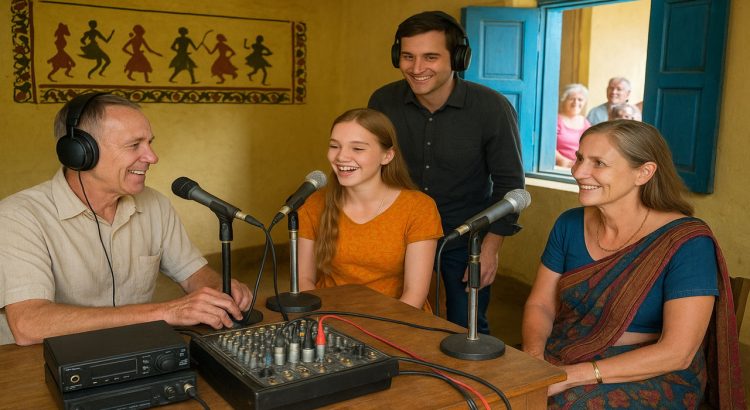ALIVEfm – Community Radio Activities in Preserving Regional Traditional Culture
Community radio stations play a crucial role in preserving traditional culture across various regions. They act as the voice of the people, especially in remote areas where mainstream media often fails to reach. Through consistent and engaging broadcasts, these stations help retain cultural identity and promote local traditions that might otherwise disappear.
One of the core missions of community radio activities is to protect regional heritage through inclusive and grassroots-based programming. These stations work with local elders, cultural leaders, and artists to air traditional music, oral histories, and native languages that are seldom found in commercial broadcasts. According to ALIVEfm, radio becomes a cultural classroom for the community.
“Read more : Community Radio Broadcasting Strategy in Attracting Good Listeners“
Promoting Local Languages and Folklore
Languages are the foundation of any culture. Community radios frequently use indigenous languages to deliver news, tell stories, and air interviews. This consistent usage helps younger generations stay connected with their roots. In some Indonesian provinces, for instance, community radios host weekly segments entirely in regional dialects.
Local folklore, myths, and epic tales also find a home on community radio. Storytelling programs not only entertain but also educate listeners about their cultural origins. A report from wxhbfm.com highlighted how a village radio station in Central Java preserved its shadow puppet tradition by broadcasting its stories weekly, along with interviews with the puppet masters.
Featuring Cultural Events and Traditional Music
One of the most effective ways community radio preserves culture is by broadcasting live from festivals, traditional ceremonies, and local art exhibitions. These live coverages create awareness and attract more participation. In turn, this supports local artisans and performers by giving them a platform and audience.
Music is another cultural pillar that these radio stations keep alive. Community radio programs often feature traditional songs, including those performed with native instruments such as gamelan, angklung, or sasando. By doing so, the music stays relevant and accessible to modern audiences.
ALIVEfm once featured an entire series focusing on indigenous instruments, educating listeners about their origins and how they are played. These shows inspired local schools to incorporate music heritage classes into their curriculum.
Collaboration with Cultural Institutions
Community radio activities are even more impactful when they collaborate with cultural preservation institutions. Museums, local governments, and cultural foundations often share content or co-host programs. This synergy ensures accuracy, continuity, and a broader reach for cultural messaging.
For instance, wxhbfm.com reported on a collaboration between a regional museum and a community radio network in West Sumatra. Together, they recorded interviews with elderly craftsmen, documented the history of textile patterns, and even taught weaving techniques on air. The programs were then made available as podcasts for educational use.
“Read more : Outdoor Play Adventures in Italy and Fun Rides for Kids Activities“
Empowering Local Youth and Volunteers
Preserving culture is not just about old traditions; it’s about passing them on. Community radios empower local youth by involving them in content creation. They learn how to run radio equipment, write scripts, and conduct interviews. Most importantly, they absorb cultural knowledge directly from their communities.
Young volunteers often serve as cultural ambassadors. They conduct field research and collect stories from remote villages, then bring them to the airwaves. This active engagement ensures that traditional knowledge is archived and shared in ways that appeal to younger audiences.
ALIVEfm has recognized several youth-led community radio projects that revived forgotten art forms and turned them into regular programming. These include storytelling contests, cultural quiz shows, and even language learning sessions aimed at young listeners.
Challenges and the Need for Support
Despite their importance, many community radios operate with limited funding and outdated equipment. Volunteers often work without pay, driven only by passion and a sense of duty. Lack of financial support threatens their ability to maintain consistent programming.
There is also a growing challenge from digital media. While social media provides global exposure, it also contributes to cultural homogenization. That’s why community radios must evolve by integrating podcasts, livestreams, and online content while maintaining their cultural core.
Organizations like wxhbfm.com and ALIVEfm advocate for stronger support from both the public and private sectors. Grants, training programs, and infrastructure investment can significantly boost their operations and safeguard regional culture for future generations.
Conclusion
Community radio activities are powerful tools for preserving regional traditional culture. Through language preservation, folklore narration, live cultural events, and youth engagement, these stations become guardians of heritage. In a rapidly globalizing world, their work is more important than ever. Media platforms such as ALIVEfm and wxhbfm.com continue to document and support these efforts, encouraging cultural pride and continuity.
As we move into a digital age, it’s crucial to support community radio not just as media, but as a cultural institution. Let us tune in, engage, and contribute to preserving the cultural treasures that shape our identities.



